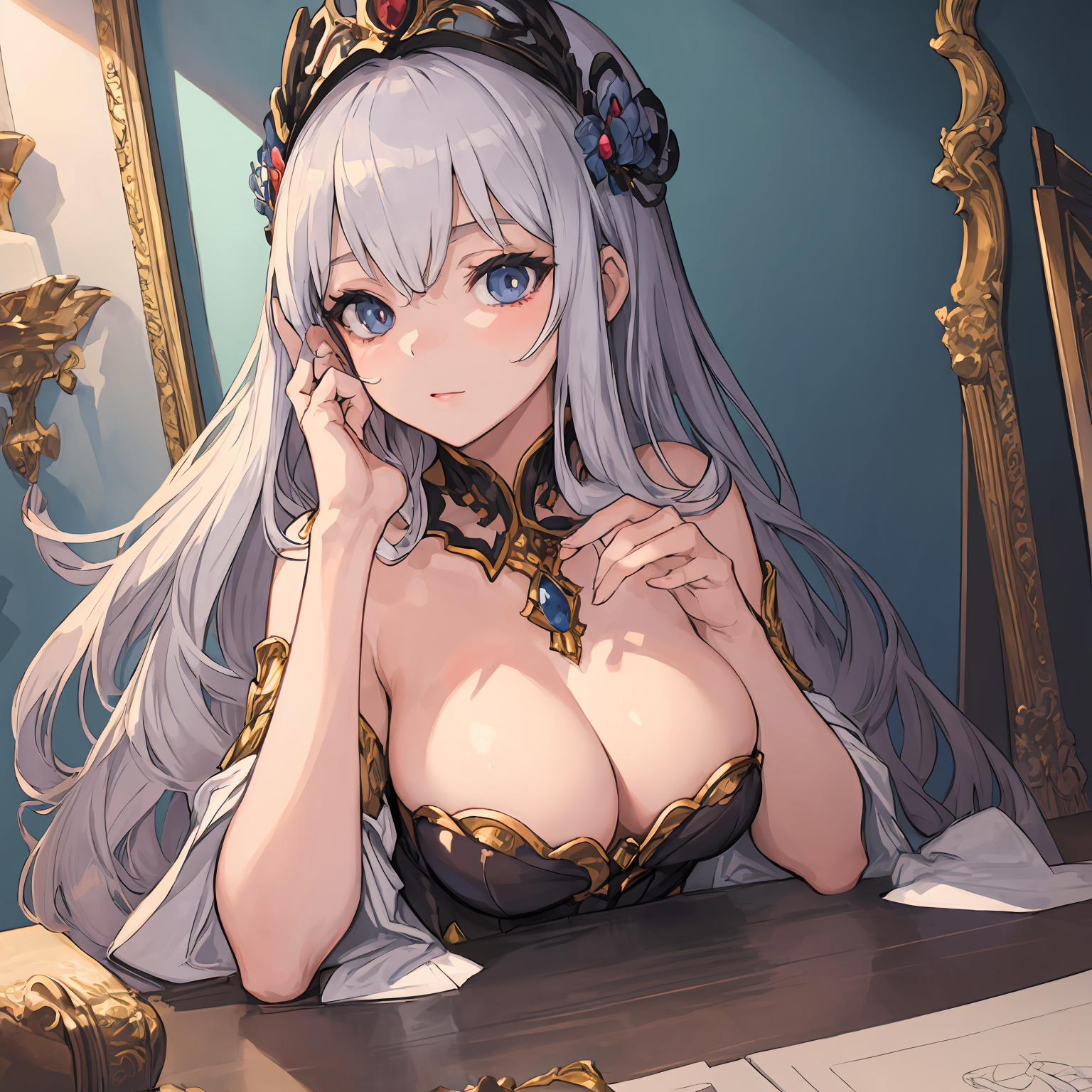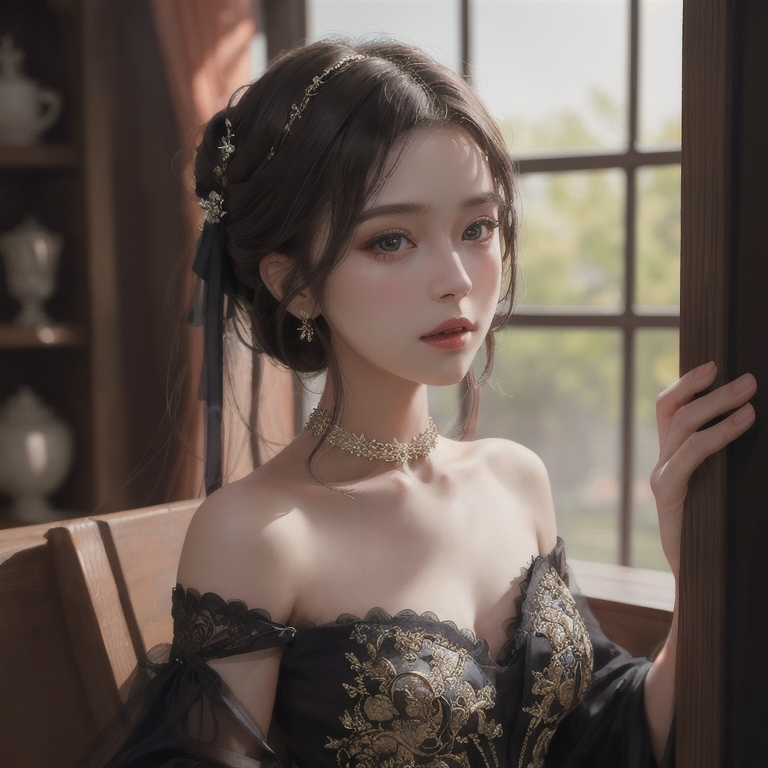cog-a1111-webui
Maintainer: llsean

3

| Property | Value |
|---|---|
| Run this model | Run on Replicate |
| API spec | View on Replicate |
| Github link | No Github link provided |
| Paper link | No paper link provided |
Create account to get full access
Model overview
The cog-a1111-webui is a Stable Diffusion API built on top of the popular A1111 webui. It provides a user-friendly interface for generating high-quality images from text prompts. Compared to similar models like cog-a1111-ui and majicmix-realistic-sd-webui, cog-a1111-webui offers a more streamlined and efficient workflow for text-to-image generation.
Model inputs and outputs
The cog-a1111-webui model takes in a variety of inputs, including a text prompt, image dimensions, and various parameters to control the generation process. The outputs are one or more high-quality images generated from the provided prompt.
Inputs
- Prompt: The text prompt that describes the desired image
- Width: The width of the output image in pixels
- Height: The height of the output image in pixels
- Num Outputs: The number of images to generate
- Guidance Scale: The scale for classifier-free guidance
- Negative Prompt: Text to be used as a "not" prompt
- Num Inference Steps: The number of denoising steps
- Seed: The random seed to use for generation
- Enable Hr: Whether to enable Hires.fix
- Hr Scale: The factor to scale the image by
- Hr Steps: The number of inference steps for Hires.fix
- Hr Upscaler: The upscaler to use for Hires.fix
- Denoising Strength: The strength of the denoising process
Outputs
- One or more generated images, returned as image URLs
Capabilities
The cog-a1111-webui model can generate a wide variety of high-quality images from text prompts. It is particularly adept at creating detailed and realistic images, as well as surreal and imaginative scenes. The model can also be used to generate multiple images at once, making it a powerful tool for rapid prototyping and experimentation.
What can I use it for?
The cog-a1111-webui model can be used for a variety of applications, such as concept art generation, product visualization, and creative content creation. It could be particularly useful for creators looking to generate custom artwork or illustrations for their projects. Additionally, the model's ability to generate multiple images in parallel could make it a valuable tool for businesses or agencies working on visual design and branding.
Things to try
One interesting aspect of the cog-a1111-webui model is its ability to generate images with a high level of detail and realism. Try experimenting with detailed prompts that describe specific scenes or objects, and see how the model handles the nuances of the request. You can also explore the model's versatility by generating a diverse range of image styles, from photorealistic to abstract and surreal.
This summary was produced with help from an AI and may contain inaccuracies - check out the links to read the original source documents!
Related Models

cog-a1111-ui

3
The cog-a1111-ui is a collection of anime-themed stable diffusion models with VAEs and LORAs, created by the maintainer brewwh. It is similar to other anime-focused text-to-image models like animagine-xl-3.1 and multilingual models like kandinsky-2.2. These models can generate high-quality, detailed anime-style illustrations and portraits. Model inputs and outputs The cog-a1111-ui model takes a variety of inputs to customize the image generation, including the model to use, VAE, sampling method, image size, and more. The outputs are generated images that can be customized based on the provided inputs. Inputs vae**: The VAE (Variational AutoEncoder) to use for the generation seed**: The seed used for random generation, set to -1 for a random seed model**: The specific model to use for generation steps**: The number of steps to take when generating (1-100) width**: The width of the generated image (1-2048 pixels) height**: The height of the generated image (1-2048 pixels) prompt**: The text prompt to guide the image generation cfg_scale**: The Classifier Free Guidance Scale, which defines how much the model pays attention to the prompt sampler_name**: The sampling method to use for generation negative_prompt**: The negative prompt to exclude certain elements from the generation denoising_strength**: The strength of denoising to apply to the generated image hr_second_pass_steps**: The number of steps to take for a high-resolution second pass Outputs The generated image(s) as a URL(s) Capabilities The cog-a1111-ui model can generate high-quality, detailed anime-style illustrations and portraits based on text prompts. It supports a variety of customization options to fine-tune the generated images, such as adjusting the image size, sampling method, and denoising strength. The model's capabilities make it suitable for tasks like character design, concept art, and visual storytelling. What can I use it for? The cog-a1111-ui model can be used for a variety of creative and artistic projects, such as generating illustrations for web comics, character designs for games or animations, and concept art for various media. The model's anime-inspired style makes it particularly useful for projects with a manga or anime aesthetic. Additionally, the model's customization options allow for a high degree of control over the generated images, enabling users to create unique and personalized content. Things to try One interesting aspect of the cog-a1111-ui model is its ability to generate high-resolution images with a second pass upscaling. By adjusting the hr_second_pass_steps parameter, users can experiment with the level of detail and sharpness in the final output. Additionally, playing with the cfg_scale and denoising_strength settings can produce a wide range of artistic styles, from more realistic to more stylized interpretations of the input prompt.
Updated Invalid Date

sd15-cog

1
sd15-cog is a Stable Diffusion 1.5 inference model created by dazaleas. It includes several models and is designed for generating high-quality images. This model is similar to other Stable Diffusion models like ssd-lora-inference, cog-a1111-ui, and turbo-enigma, which also focus on text-to-image generation. Model inputs and outputs The sd15-cog model accepts a variety of inputs to customize the image generation process. These include the prompt, seed, steps, width, height, cfg scale, and more. The model outputs an array of image URLs. Inputs vae**: The vae to use seed**: The seed used when generating, set to -1 for random seed model**: The model to use steps**: The steps when generating width**: The width of the image height**: The height of the image prompt**: The prompt hr_scale**: The scale to resize cfg_scale**: CFG Scale defines how much attention the model pays to the prompt when generating enable_hr**: Generate high resoultion version batch_size**: Number of images to generate (1-4) hr_upscaler**: The upscaler to use when performing second pass sampler_name**: The sampler used when generating negative_prompt**: The negative prompt (For things you don't want) denoising_strength**: The strength when applying denoising hr_second_pass_steps**: The steps when performing second pass Outputs An array of image URLs Capabilities The sd15-cog model can generate high-quality, photorealistic images from text prompts. It supports a variety of customization options to fine-tune the output, such as adjusting the resolution, sampling method, and denoising strength. What can I use it for? You can use sd15-cog to create custom illustrations, portraits, and other images for a variety of applications, such as marketing materials, product designs, and social media content. The model's ability to generate diverse and realistic images makes it a powerful tool for creative professionals and hobbyists alike. Things to try Try experimenting with different prompts, sampling methods, and other settings to see how they affect the output. You can also explore the model's ability to generate images with specific styles or themes by adjusting the prompt and other parameters.
Updated Invalid Date

sdxl-lightning-4step

409.9K
sdxl-lightning-4step is a fast text-to-image model developed by ByteDance that can generate high-quality images in just 4 steps. It is similar to other fast diffusion models like AnimateDiff-Lightning and Instant-ID MultiControlNet, which also aim to speed up the image generation process. Unlike the original Stable Diffusion model, these fast models sacrifice some flexibility and control to achieve faster generation times. Model inputs and outputs The sdxl-lightning-4step model takes in a text prompt and various parameters to control the output image, such as the width, height, number of images, and guidance scale. The model can output up to 4 images at a time, with a recommended image size of 1024x1024 or 1280x1280 pixels. Inputs Prompt**: The text prompt describing the desired image Negative prompt**: A prompt that describes what the model should not generate Width**: The width of the output image Height**: The height of the output image Num outputs**: The number of images to generate (up to 4) Scheduler**: The algorithm used to sample the latent space Guidance scale**: The scale for classifier-free guidance, which controls the trade-off between fidelity to the prompt and sample diversity Num inference steps**: The number of denoising steps, with 4 recommended for best results Seed**: A random seed to control the output image Outputs Image(s)**: One or more images generated based on the input prompt and parameters Capabilities The sdxl-lightning-4step model is capable of generating a wide variety of images based on text prompts, from realistic scenes to imaginative and creative compositions. The model's 4-step generation process allows it to produce high-quality results quickly, making it suitable for applications that require fast image generation. What can I use it for? The sdxl-lightning-4step model could be useful for applications that need to generate images in real-time, such as video game asset generation, interactive storytelling, or augmented reality experiences. Businesses could also use the model to quickly generate product visualization, marketing imagery, or custom artwork based on client prompts. Creatives may find the model helpful for ideation, concept development, or rapid prototyping. Things to try One interesting thing to try with the sdxl-lightning-4step model is to experiment with the guidance scale parameter. By adjusting the guidance scale, you can control the balance between fidelity to the prompt and diversity of the output. Lower guidance scales may result in more unexpected and imaginative images, while higher scales will produce outputs that are closer to the specified prompt.
Updated Invalid Date

my_comfyui

124
my_comfyui is an AI model developed by 135arvin that allows users to run ComfyUI, a popular open-source AI tool, via an API. This model provides a convenient way to integrate ComfyUI functionality into your own applications or workflows without the need to set up and maintain the full ComfyUI environment. It can be particularly useful for those who want to leverage the capabilities of ComfyUI without the overhead of installing and configuring the entire system. Model inputs and outputs The my_comfyui model accepts two key inputs: an input file (image, tar, or zip) and a JSON workflow. The input file can be a source image, while the workflow JSON defines the specific image generation or manipulation steps to be performed. The model also allows for optional parameters, such as randomizing seeds and returning temporary files for debugging purposes. Inputs Input File**: Input image, tar or zip file. Read guidance on workflows and input files on the ComfyUI GitHub repository. Workflow JSON**: Your ComfyUI workflow as JSON. You must use the API version of your workflow, which can be obtained from ComfyUI using the "Save (API format)" option. Randomise Seeds**: Automatically randomize seeds (seed, noise_seed, rand_seed). Return Temp Files**: Return any temporary files, such as preprocessed controlnet images, which can be useful for debugging. Outputs Output**: An array of URIs representing the generated or manipulated images. Capabilities The my_comfyui model allows you to leverage the full capabilities of the ComfyUI system, which is a powerful open-source tool for image generation and manipulation. With this model, you can integrate ComfyUI's features, such as text-to-image generation, image-to-image translation, and various image enhancement and post-processing techniques, into your own applications or workflows. What can I use it for? The my_comfyui model can be particularly useful for developers and creators who want to incorporate advanced AI-powered image generation and manipulation capabilities into their projects. This could include applications such as generative art, content creation, product visualization, and more. By using the my_comfyui model, you can save time and effort in setting up and maintaining the ComfyUI environment, allowing you to focus on building and integrating the AI functionality into your own solutions. Things to try With the my_comfyui model, you can explore a wide range of creative and practical applications. For example, you could use it to generate unique and visually striking images for your digital art projects, or to enhance and refine existing images for use in your design work. Additionally, you could integrate the model into your own applications or services to provide automated image generation or manipulation capabilities to your users.
Updated Invalid Date